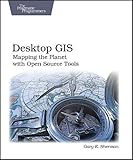 (Wikipedia)
(Wikipedia)Juno is the story of a teenager who is pregnant. In 2007 when it came out, there was much controversy, as everyone on the pro-life/pro-choice/teenage pregnancy/values issues had a go at it. But I never saw it until now.
I was all expecting it to be one of those movies with the spunky teenage girl and clueless adults around her. But it was not. It is a teenage girl, dealing with the world through her mistakes and with the help of people around her.
Juno is a high school girl, who has gotten pregnant. The other major characters are the boy (surprise!), her best friend, and her parents. While initially she was going to have an abortion (apparently, her best friend had helped a few other girls in their school through the process) Juno changes her mind at the clinic and tries to give up her baby through adoption. The couple that is planning on adopting the baby become the other main characters in the movie.
Instead of the sassy teenager, Juno is introspective and comes to terms with what she recognizes as a mistake. And her focus is on dealing with it. There are others around her like the school nurse, some of the other classmates who look down on her. But those closest react differently. Her parents first reaction is disbelief, mostly blaming themselves for being bad parents. But they too, after first beating themselves up, switch into dealing with the situation, getting Juno through her pregnancy and the adoption.
What I liked about it was how they handle adversity. Yes, Juno and her parents (and the father) are hard on themselves for messing up. But the focus is on what has to happen next. The parents making sure that lessons are learned. The daughter learning that her parents are paying attention and care about her. And they guide her, with what wisdom they have. And in the end they have her respect.
None of the principles thinks they have it all together. Just people who have made mistakes, and need to figure out life. And in a movie, that is good.

